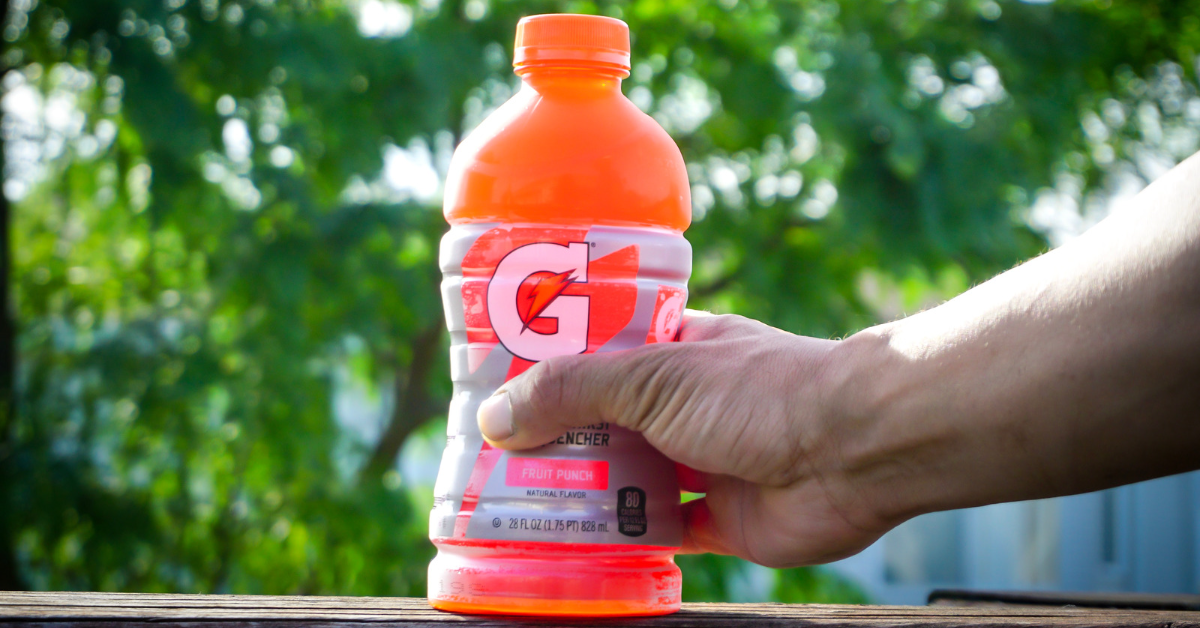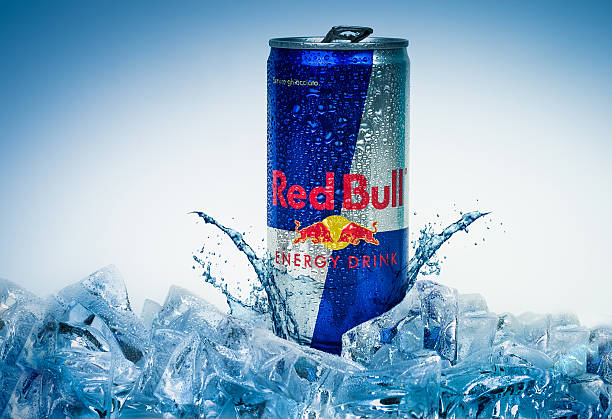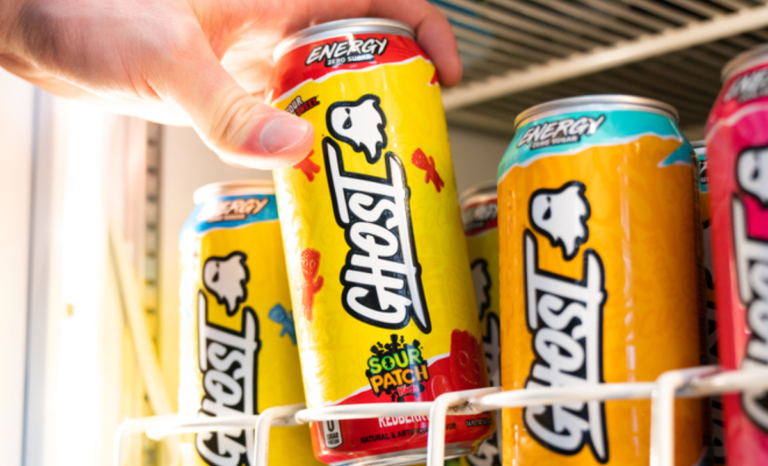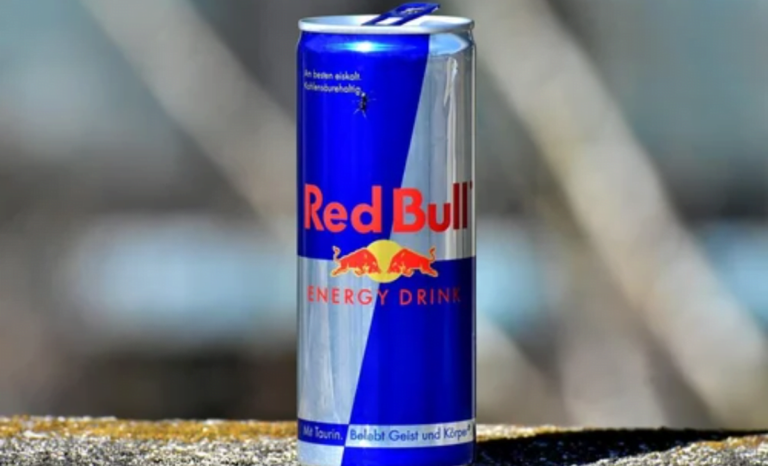Imagine reaching for your favorite Gatorade after a sweaty workout, only to find something unexpected lurking at the bottom – mold! It’s enough to make anyone wonder: what happens if you drink moldy Gatorade?
Drinking moldy Gatorade can expose you to harmful mycotoxins produced by the mold, leading to respiratory issues, digestive discomfort, and potential allergic reactions.
First of all let’s understand what Mold is
Mold is a type of fungus that thrives in damp environments, and it plays a significant role in the natural decomposition of organic matter.
Mold exists in various colors, including green, black, white, and gray. It reproduces through tiny spores that float in the air, making it easy for them to spread and colonize new areas.
Mold requires moisture, warmth, and organic material to grow. This is why it is commonly found in areas with water damage, high humidity, or inadequate ventilation. Common indoor locations where mold can flourish include bathrooms, kitchens, basements, and areas with plumbing leaks.
How Mold Develops in Gatorade drink
Mold can develop in Gatorade due to its liquid nature, containing water that serves as a breeding ground for mold spores.
The sugar and electrolyte content in Gatorade provide an organic food source for mold to thrive. Damaged or improperly sealed packaging allows contaminants, including mold spores, to enter the beverage.
Inadequate storage conditions, exposure to warmth, sunlight, or humid environments, further contribute to mold growth. As Gatorade nears its expiration date, the efficacy of preservatives diminishes, increasing vulnerability to mold.
Check out our detailed analysis of Are Ghost Energy Drinks Bad for You?
How to identify Moldy Gatorade

Recognizing mold in Gatorade is essential for safeguarding your health and ensuring a pleasant drinking experience. Here’s a simple guide to identifying moldy Gatorade:
1. Visual Inspection
Start by visually examining the Gatorade. Mold often appears as fuzzy patches, floating particles, or discoloration. If you notice any unusual growth or changes in color, it’s a clear indicator of potential mold contamination. This is how you check expiration date of Body Armor drinks too.
2. Off-Put Odor
Mold-infested Gatorade may emit a distinct, unpleasant odor. If the beverage smells musty, earthy, or off-putting, it could signify the presence of mold. Trust your sense of smell as an additional cue to detect contamination.
3. Check the Packaging
Inspect the integrity of the Gatorade packaging. Damaged or compromised seals can allow contaminants, including mold spores, to enter the drink. Ensure that the cap is tightly sealed, and there are no visible signs of leaks or punctures.
4. Expiration Date
Check the expiration date on the Gatorade bottle. As the beverage approaches or surpasses this date, the risk of mold growth increases. Expired Gatorade may no longer be adequately protected against microbial contamination.
5. Floating Particles
Mold can manifest as floating particles in the liquid. If you observe any specks, strands, or irregular textures in the Gatorade, exercise caution and consider discarding the beverage.
6. Unusual Texture
Mold can alter the texture of a liquid. If the Gatorade feels slimy, gritty, or has an unexpected consistency, it may indicate the presence of mold. Trust your tactile senses to identify any abnormalities.
7. The Taste Test
If your Gatorade suddenly tastes bitter, sour, or off-putting, there’s a good chance it’s past its prime. Trust your taste buds, they’re your built-in mold detectors.
Caution: Don’t take a big gulp! A tiny sip is all you need
What Happens if You Drink Moldy Gatorade: Understanding risks
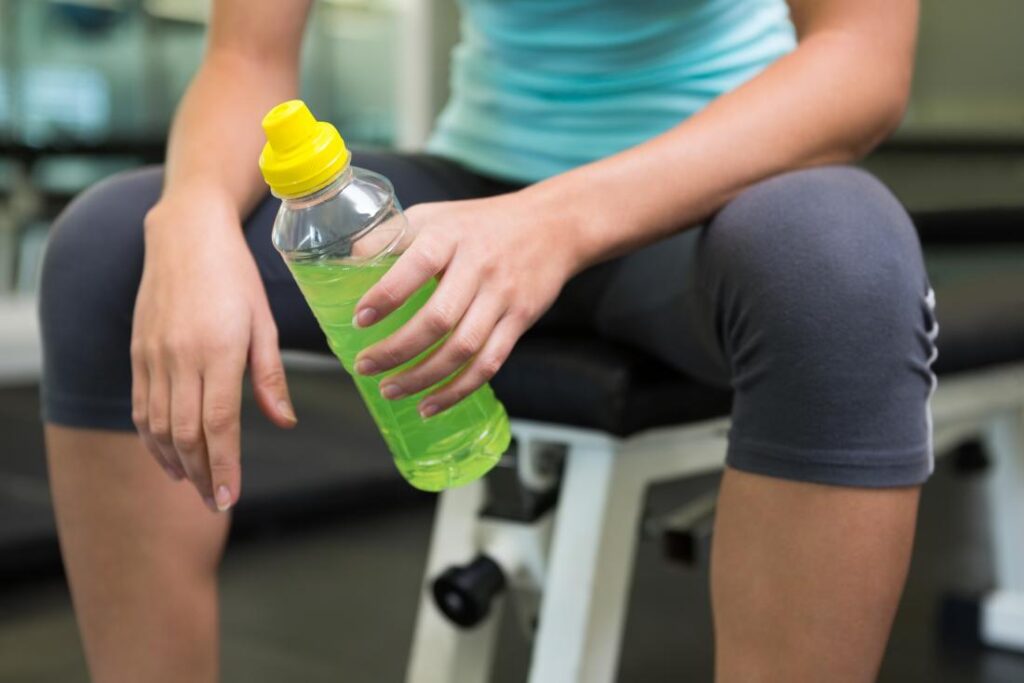
Consuming moldy Gatorade poses potential health risks, emphasizing the importance of recognizing and avoiding contaminated beverages. The presence of mold introduces several concerns that can impact your well-being:
1. Ingestion of Harmful Mycotoxins
Mold produces mycotoxins, toxic substances that can have adverse effects on human health. When you drink moldy Gatorade, you risk ingesting these mycotoxins, which may lead to various health issues.
2. Respiratory Problems
Mold spores can trigger respiratory problems, especially in individuals with mold allergies or pre-existing respiratory conditions. Inhaling moldy Gatorade can irritate the respiratory system, causing coughing, wheezing, or difficulty breathing.
3. Digestive Distress
Ingesting moldy Gatorade can result in digestive distress. The mycotoxins produced by mold may lead to stomachaches, nausea, vomiting, and diarrhea. These symptoms can be particularly severe in individuals with compromised immune systems.
4. Allergic Reactions
Mold exposure can induce allergic reactions in some individuals. Symptoms may include itching, redness, swelling, or hives. Those with known mold allergies should exercise caution to prevent allergic responses.
5. Long-Term Health Effects
While acute symptoms may be immediate, the long-term health effects of regularly consuming moldy Gatorade are not well understood. Prolonged exposure to mycotoxins may contribute to chronic health issues, making it crucial to prioritize the safety of the beverages we consume.
Note: These are the worst-case scenarios, and most people who accidentally drink moldy Gatorade won’t experience anything major. But why risk it?
What to Do if You Drink Moldy Gatorade (Immediate Actions )

Discovering that you’ve consumed moldy Gatorade can be concerning, but taking prompt and appropriate actions can mitigate potential health risks. Here’s a step-by-step guide on what to do if you find yourself in this situation:
1. Stop Drinking Immediately
Cease drinking the moldy Gatorade as soon as you realize it’s contaminated. Spit out any remaining liquid and avoid swallowing more of the affected beverage.
2. Rinse Your Mouth Thoroughly
Rinse your mouth with clean water to remove any residual mold particles. Swish the water around in your mouth and spit it out several times to ensure thorough cleansing.
3. Monitor for Symptoms
Be vigilant for any immediate symptoms or reactions. Watch for signs of respiratory issues, digestive discomfort, allergic reactions, or any other unusual symptoms that may arise after consuming moldy Gatorade.
4. Stay Hydrated with Clean Water
Drink plenty of clean, uncontaminated water to help flush out toxins from your system. Staying hydrated is crucial for supporting your body’s natural detoxification processes.
5. Seek Medical Attention if Needed
If you experience severe symptoms, persistent discomfort, or if you are unsure about the potential health impacts of consuming moldy Gatorade, seek medical attention promptly. A healthcare professional can assess your condition and provide appropriate guidance.
According to doctors, If you’ve consumed moldy Gatorade, there’s a small chance of getting an intestinal infection.
Doctors recommend taking over-the-counter medicine like non-drowsy Dramamine. As after consuming moldy Gatorade, individuals may experience nausea or an upset stomach.
Non-drowsy Dramamine, an over-the-counter medicine, can be beneficial in alleviating these symptoms without inducing significant drowsiness. It can help manage the feeling of sickness, providing relief and allowing individuals to go about their daily activities without the side effects of drowsiness.
If there’s a concern about the development of an intestinal infection due to moldy Gatorade consumption, a healthcare professional might recommend Metronidazole.
This antibiotic is effective against certain bacteria and parasites that could lead to gastrointestinal issues. It is crucial to take Metronidazole under the guidance of a healthcare provider, as the appropriate dosage and duration of treatment will depend on individual health factors.
Discover more: Does Gatorade Have Red Dye 40 in it?
6. Discard the Remaining Gatorade
Dispose of the moldy Gatorade immediately. Do not attempt to salvage or consume any more of the contaminated beverage to prevent further exposure to potentially harmful mycotoxins.
Discover more: When Did Gatorade Stop Using Glass Bottles
7. Investigate Storage and Check Expiry Dates
Assess the storage conditions of the Gatorade to identify potential factors contributing to mold growth. Additionally, check the expiration date on the bottle. Proper storage and timely consumption can help reduce the risk of encountering mold in the future.
8. Learn from the Experience
Use the incident as a learning opportunity. Be more vigilant in inspecting beverages before consumption, checking for signs of mold, and ensuring proper storage practices.
9. Consider Allergies and Sensitivities
If you have known mold allergies or sensitivities, pay extra attention to your body’s response. Individuals with pre-existing respiratory conditions should be especially cautious and consult a healthcare professional if necessary.
Read more: Simple Non alcoholic Drinks to Make with Gatorade
Preventing Mold Growth in Gatorade drinks
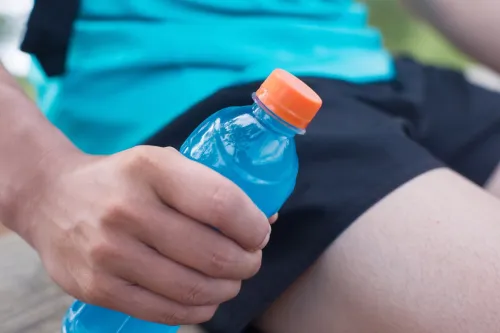
Okay, we’ve talked about the fuzzy foes lurking in potentially moldy Gatorade, and the not-so-pleasant consequences of letting them crash the party in your tummy.
Now, let’s get proactive and equip you with some ninja moves to prevent these microscopic mischief-makers from taking over your drink
Proper Storage
Mold loves warmth and moisture. Think of it as a tiny sunbather who craves a steamy sauna. So, to keep those spores from setting up camp in your Gatorade, keep it cool! Store it in the fridge, or if you’re on the go, pop it in an insulated cooler with ice packs.
Store Gatorade in a cool, dry place away from direct sunlight. Exposure to heat and sunlight can create an environment conducive to mold growth. Optimal storage conditions help preserve the freshness of the beverage.
Opened Gatorade can last for 3-5 days in refrigerator unlike monster energy which can last for 24 hours after opening bottle.
Check Expiry Dates
Regularly check the expiration date on Gatorade bottles. Expired products may be more prone to mold growth, as the preservatives that inhibit microbial contamination may lose efficacy over time. Prioritize consuming Gatorade before it reaches its expiration date.
Inspect Packaging Integrity
Thoroughly examine Gatorade packaging for any signs of damage or compromise. Damaged seals, cracks, or punctures can introduce contaminants, including mold spores, into the beverage. Ensure that the cap is securely sealed to prevent external elements from infiltrating.
Refrigerate Opened Bottles
Once a Gatorade bottle is opened, refrigerate it to slow down the growth of mold. Cold temperatures inhibit microbial activity, preserving the freshness of the beverage for an extended period. Refrigeration is particularly important in warmer climates.
Regularly Clean Storage Areas
Maintain cleanliness in the areas where Gatorade is stored. Clean shelves, refrigerators, and storage spaces regularly to eliminate potential sources of mold spores and prevent their transfer to the beverage. A clean environment reduces the risk of contamination.
Discard Moldy or Expired Products
Conduct regular visual inspections of Gatorade bottles. If you notice any signs of mold, such as discoloration or floating particles, discard the affected product immediately. Similarly, dispose of Gatorade that has passed its expiration date to avoid potential health risks.
Use a Clean Drinking Container
When pouring Gatorade into a drinking container, ensure that the container is clean and free from mold or other contaminants. Regularly wash and sanitize drinking containers to maintain the beverage’s quality and prevent mold transfer.
Avoid Leaving Opened Bottles Unattended
If a Gatorade bottle is opened but not consumed entirely, avoid leaving it unattended for an extended period. Reseal the bottle tightly to limit exposure to air, and refrigerate it to prevent mold growth due to prolonged exposure and potential environmental contaminants.
Be Mindful of Environmental Factors
Consider environmental factors that may contribute to mold growth, such as humidity levels. In humid climates, take extra precautions to store Gatorade in optimal conditions. Avoid leaving bottles exposed to moisture, which can accelerate mold development.
Educate Consumers
Raise awareness among consumers about proper storage practices and the visual cues indicating mold contamination. Encourage individuals to inspect their beverages before consumption, emphasizing the importance of preventive measures to safeguard against potential health risks.
Also check out
How to clean mold out of Gatorade water bottle?
It’s not advisable to clean mold out of a Gatorade water bottle and reuse it, especially if the mold covers a significant area or you’re unsure of the type.
Mold spores can be difficult to remove completely, and even small amounts can pose health risks, including allergic reactions, respiratory problems, and even mycotoxin poisoning if the mold produces these toxins.
Here’s what you should do instead:
1. Discard the moldy bottle: This is the safest and most hygienic option. Throw the bottle away in a sealed garbage bag to prevent spreading spores.
2. Disinfect the area where the bottle was stored: Thoroughly clean the area where you kept the bottle with a solution of 1 part bleach to 10 parts water. Rinse well and let it air dry completely.
3. Invest in a new bottle: Choose a bottle made of a material that is easier to clean and less prone to mold growth, such as stainless steel or BPA-free plastic.
4. Practice good cleaning habits: Wash your water bottle regularly with hot soapy water, especially after each use. Allow it to air dry completely before storing it. Avoid leaving sugary or acidic drinks in the bottle for extended periods, as these can encourage mold growth.
Home remedies to remove Mold from Gatorade bottles
While it’s generally not recommended to try to remove mold from a Gatorade bottle and reuse it due to the difficulty of complete removal and potential health risks, I understand there might be situations where you’d like to try.
Here are some home methods to attempt mold removal, but proceed with caution and at your own risk:
1. Hot Water and Dish Soap
This is the simplest method and effective for light mold growth. Fill the bottle with hot water and dish soap.
Soak for at least 30 minutes. Scrub the bottle thoroughly with a bottle brush, paying special attention to areas with mold.
Rinse the bottle several times with hot water and then with white vinegar. Let the bottle air dry completely.
2. White Vinegar
White vinegar is a natural disinfectant with mild antifungal properties. Fill the bottle with equal parts white vinegar and water.
Soak for at least 1 hour, or overnight for stubborn mold. Scrub the bottle with a bottle brush and rinse thoroughly with hot water.
Rinse again with white vinegar to remove any soap residue. Let the bottle air dry completely.
3. Baking Soda
Baking soda can help absorb mold spores and odors. Make a paste with baking soda and water.
Apply the paste to the moldy areas and let it sit for 30 minutes. Scrub the bottle with a bottle brush and rinse thoroughly with hot water.
Rinse again with white vinegar to remove any baking soda residue. Let the bottle air dry completely.
4. Hydrogen Peroxide
Hydrogen peroxide (3%) can kill mold spores, but be careful as it can bleach the plastic. Fill the bottle with a 3% hydrogen peroxide solution.
Soak for 15 minutes, then scrub the bottle with a bottle brush. Rinse thoroughly with hot water and then with white vinegar. And finally, let the bottle air dry completely.
Important Reminders
- Always wear gloves and eye protection when handling mold.
- Do not use bleach on moldy plastic, as it can release harmful fumes.
- Even after cleaning, there is a risk that some mold spores may remain. If you are concerned about your health, it is best to replace the bottle.
- These methods are not guaranteed to remove all mold, and it is important to monitor your health after consuming anything from a previously moldy container.
Gatorade Mold Lawsuit and Controversy
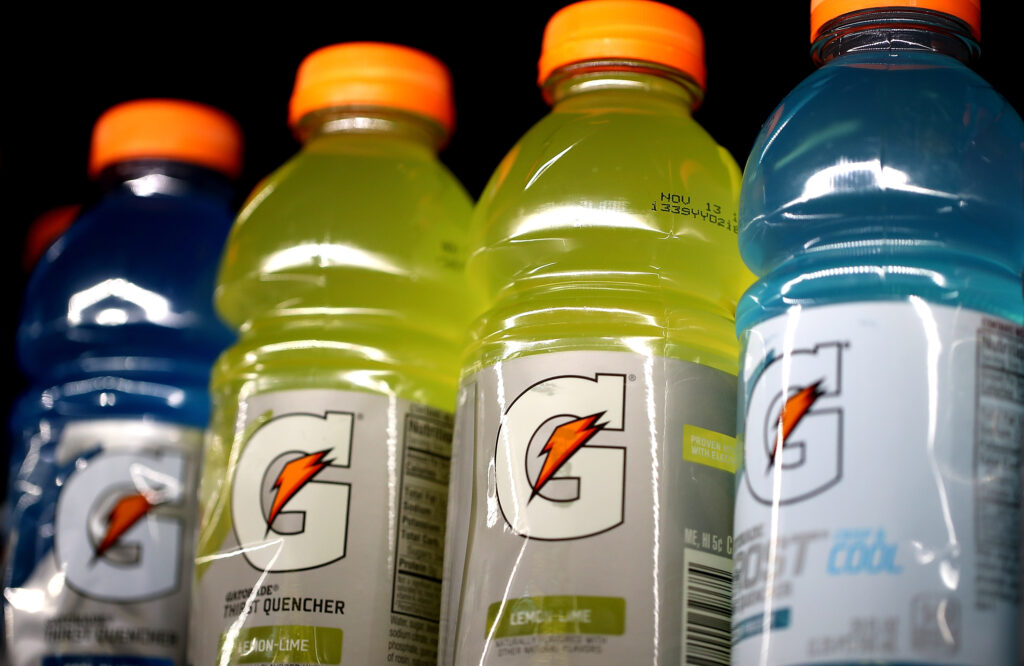
In recent times, there have been instances where consumers have reported discovering mold in Gatorade products, leading to concerns and, in some cases, legal actions.
These incidents have prompted investigations into the quality control measures employed by the manufacturer and have raised questions about potential health risks associated with moldy Gatorade.
Legal Basis
Lawsuits related to mold in Gatorade typically revolve around product liability and consumer protection. Consumers argue that the presence of mold in a commercially available beverage constitutes a breach of the duty of care owed by the manufacturer to its consumers. They may also allege that the product was not fit for human consumption due to contamination.
Consumer Complaints
Many complaints stem from consumers discovering visible mold, off-putting odors, or unusual tastes in their Gatorade bottles. Some individuals have reported experiencing adverse health effects, further fueling concerns about the safety and quality of the product.
Manufacturer’s Response
In response to such incidents, Gatorade’s manufacturer has, in some cases, issued statements emphasizing their commitment to quality control and product safety. They may conduct internal investigations and implement corrective measures to address potential sources of contamination in their production and distribution processes.
In certain situations, multiple consumers with similar complaints may join together to file class-action lawsuits against the manufacturer. Class actions consolidate individual claims into a single legal action, allowing consumers to collectively seek compensation for damages, medical expenses, or other related losses.
Legal Challenges
Proving liability in Gatorade mold lawsuits can be challenging. Plaintiffs must demonstrate that the mold contamination occurred before or during the manufacturing process and that it directly resulted in harm or damages. Establishing a direct link between the alleged mold exposure and specific health issues may also pose legal complexities.
What would be Gatorade manufacturer response
To address consumer concerns and legal challenges, manufacturers may enhance quality control protocols, improve packaging, and provide clearer instructions for product storage and consumption. Preventive measures aim to reduce the likelihood of mold growth and enhance overall product safety.
Can I sue the manufacturers of Gatorade if I found ton of mold in the bottle?
If you discover a substantial amount of mold in a Gatorade bottle and believe it has caused harm or poses a health risk, you may have grounds to consider legal action.
However, the success of a lawsuit can depend on several factors, including the extent of the harm, evidence of the mold’s presence before or during the manufacturing process, and the connection between the mold exposure and any health issues. Documenting any health issues and obtaining medical records can strengthen your case.
According to personal injury lawyers,
However, for a lawsuit to be viable, it typically needs to involve injury or damage caused by the product. It’s recommended to continue efforts to contact the manufacturer, as they may have an obligation to address the issue, especially if it resulted in harm or damage.
If there is no harm or injury, pursuing a lawsuit may be challenging. Without medical expenses or other tangible damages, the legal options may be limited. In such cases, seeking a replacement, refund, or compensation through other means might be the extent of the recourse.
If you are considering legal action, consult with a lawyer experienced in product liability. They can provide advice based on the specifics of your situation and guide you through the legal process.
Conclusion
If you drink moldy Gatorade, there is a risk of ingesting harmful mycotoxins produced by mold, leading to various health concerns such as respiratory problems, digestive distress, and allergic reactions.
Immediate actions, including ceasing consumption, rinsing the mouth, and seeking medical attention if necessary, are crucial to mitigate potential risks. Prevention remains the key to ensuring a safe and refreshing Gatorade experience.
Safeguarding against moldy Gatorade involves vigilant storage practices, regular inspections, and swift action if contamination is suspected.
By following the preventive measures outlined, consumers can enjoy their beverages with confidence, minimizing the risk of mold exposure and potential health issues.
You may wanna check out: Does Celsius drinks Have Alcohol?
FAQS
Can Gatorade get moldy?
Yes, Gatorade can get moldy, especially if exposed to conditions that promote mold growth, such as warmth and moisture. Proper storage and timely consumption help prevent mold contamination. Check for signs of mold, unusual odors, or changes in color, and discard any Gatorade that appears spoiled.
What is the white stuff in my Gatorade?
The white stuff in your Gatorade could be sediment or crystallized minerals, which are harmless and occur when the beverage is exposed to extreme temperatures or stored for extended periods. It’s generally safe to consume, but you may want to shake the bottle to redistribute the minerals before drinking.
What happens if you don’t refrigerate Gatorade?
While Gatorade is safe to drink if not refrigerated, refrigeration can extend its shelf life. Storing it in the fridge slows down bacterial growth, preserving the beverage’s quality. However, unrefrigerated Gatorade is still safe for consumption within a reasonable time frame.
How long does it take for Gatorade to go bad?
Gatorade typically has a shelf life of about 9-12 months. However, factors like exposure to heat, light, and air can accelerate spoilage. Signs of spoilage include a change in color, off-putting odor, or the presence of mold. Always check the expiration date and store Gatorade properly to ensure its freshness.
How do you get mold out of a Gatorade water bottle?
To remove mold from a Gatorade water bottle, wash it thoroughly with hot water and soap. Use a bottle brush to reach crevices, and consider soaking it in a solution of water and white vinegar or baking soda to eliminate mold and odors. Rinse the bottle well before use to ensure all cleaning agents are removed.
What happens if you drink spoiled Gatorade?
Drinking spoiled Gatorade, especially if it contains mold, can lead to various health risks. Mold can produce mycotoxins that may cause respiratory issues, digestive discomfort, allergic reactions, and other health problems.
If you suspect your Gatorade is spoiled, it’s crucial to discard it and avoid consumption to minimize potential health risks. If symptoms persist, seek medical attention.
Does bottled Gatorade go bad?
Yes, bottled Gatorade can go bad. While it typically has a shelf life of 9-12 months, factors like exposure to heat, light, and air can accelerate spoilage.
Signs of spoilage include changes in color, off-putting odor, or the presence of mold. Always check the expiration date and store bottled Gatorade properly to ensure its freshness.
Does powdered Gatorade go bad?
Yes, powdered Gatorade can go bad. Although it has a longer shelf life than the bottled version, it can still expire. Check the expiration date on the packaging and store it in a cool, dry place to prevent clumping and maintain its quality.
How do you get mold out of a Gatorade bottle lid?
To remove mold from a Gatorade bottle lid, soak it in a mixture of hot water and white vinegar or baking soda. Use a brush or toothbrush to scrub away the mold, ensuring you reach all crevices. Rinse the lid thoroughly with hot water afterward to remove any remaining cleaning solution.
Can Gatorade powder get moldy?
Yes, Gatorade powder can get moldy if it is exposed to moisture. To prevent mold growth, store the powder in a cool, dry place, and ensure the container is tightly sealed. If you notice any signs of mold or an off-putting odor, discard the powder to avoid potential health risks.
Why does my Gatorade water bottle smell bad?
A bad odor in your Gatorade water bottle could be due to mold or bacterial growth. Mold thrives in moist environments, so it’s essential to wash the bottle regularly, especially in hard-to-reach areas.
Use a bottle brush and mild soap to clean it thoroughly, and consider soaking it in a solution of water and white vinegar to eliminate odors. Always rinse the bottle well before use.
Toddler Drank Moldy Gatorade: What to do?
If a toddler has ingested moldy Gatorade, it’s crucial to seek immediate medical attention. Mold can produce mycotoxins, potentially causing health issues. Contact a healthcare professional or poison control for guidance. Keep the Gatorade bottle as evidence for identification purposes.
Why does Gatorade taste bad after freezing?
Freezing can alter the texture and taste of Gatorade. The water content may separate from the electrolytes and flavor components during freezing and thawing, leading to an uneven taste. Additionally, the freezing process can impact the drink’s consistency, resulting in a less palatable experience.
Does Gatorade concentrate need to be refrigerated?
While Gatorade concentrate doesn’t necessarily need refrigeration, it’s advisable to store it in a cool, dry place after opening. Refrigeration can help maintain its quality, but it’s not strictly required.
Ensure the concentrate container is tightly sealed to prevent exposure to air and contaminants. Always check the product’s label for specific storage instructions.
If you love cocktails, do not forget to check out our unique Gatorade cocktail shots!

